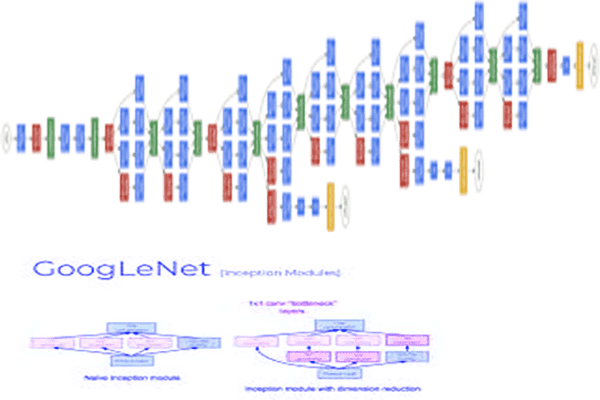Training via Transfer in Computer Vision: Changing Visual Perception
The many benefits of transfer learning have brought to a true revolution in computer vision. However, why is this approach so important? In actuality, the computer power required for the training of vision models is significant, and it may also require access to specialized hardware components like GPUs (graphic processing units) or TPUs (tensor processing units). As a matter of fact, training a model on a dataset that contains millions of photos can quickly become laborious.
One popular approach to overcoming these obstacles is to repurpose
machine learning models that have previously been trained on massive datasets,
comprising of millions of photos and videos. By downloading and directly
integrating these pre-trained models into newly created models that take photos
as input, time and resource consumption can be reduced while performance is
increased.
Microsoft's ResNet, Google's Inception template, and Oxford University's
VGG template are three notable instances of templates utilized in this
methodology.
One of the first models to use deep neural networks for computer vision was the Oxford University-developed VGG (Visual Geometry Group) model. Its relative richness and simplicity make it stand out. The VGG model is especially well-known for its application in image classification. It consists of many convolutional layers. The VGG model is a strong basis for numerous computer vision applications since it has been pre-trained on a huge number of images due to its sturdy architecture.
Known for its intricate architecture of Inception modules, the Inception model was created by Google. With the help of these modules, the model is better able to identify objects in photos by extracting information at various spatial scales. The Inception model has developed a profound grasp of many different visual aspects as a result of training on enormous datasets. Researchers and developers can use this prior knowledge to solve certain problems without having to start from scratch by integrating this pre-trained model.
3.
Microsoft's ResNet:
By integrating residual connections, the ResNet, also known as the residual network, introduced a significant innovation in neural network design. By allowing information to bypass some network layers, these links make it easier to train deeper networks. ResNet is a popular choice for contests like ImageNet because of its exceptional performance in complicated object recognition. The capacity of ResNet to extract intricate features from images—even with small data sets—makes it advantageous for practitioners to integrate the model into new computer vision applications.
Advantages of Transfer Learning :
There are numerous noteworthy benefits associated with transfer learning in the domain of computer vision. First off, by utilizing the information gleaned from previously trained models, it avoids the difficulties associated with extensive training on large datasets. This results in significant time savings for the researchers because they may concentrate on particular modifications instead of beginning from scratch.
Furthermore, transfer learning facilitates the solution of particular issues with small data sets. Pre-trained models work even with smaller datasets since they have already learned general features from a vast amount of data.
The availability of pre-trained models contributes to the democratization of computer vision applications. These ready-to-use models offer benefits to both inexperienced developers and researchers without compromising the quality of the final product.
Problems and considerations:
Transfer learning has drawbacks in addition to benefits. The pre-trained model may need to be carefully adjusted when applied to a particular application to prevent performance loss. Additionally, applying general models on highly specialized jobs may encounter challenges because to the diversity of data sources.
The danger of overfitting, in which the previously trained model may be overly particular to the features of the original dataset and poorly generalize to new datasets, is another crucial factor to take into account.
In conclusion, transfer learning has fundamentally changed how we think about computer vision. We have improved the accuracy of results and sped up the process of creating new models by utilizing the prior knowledge of pre-trained models. Well-known models like VGG, Inception, and ResNet have opened the door for creative uses in fields including advanced categorization, object identification, and picture recognition.
But it's crucial to understand that transfer learning is only sometimes a universally applicable approach. It's important for researchers and developers to stay mindful of the possible obstacles and modifications needed to make sure that trained models successfully fulfill the project-specific needs.
In the end, transfer learning is a potent instrument that will continue to influence computer vision in the future, opening the door to previously unthinkable breakthroughs and uses.
Mastering Deep Learning in Challenging Times – A Guide to Success




